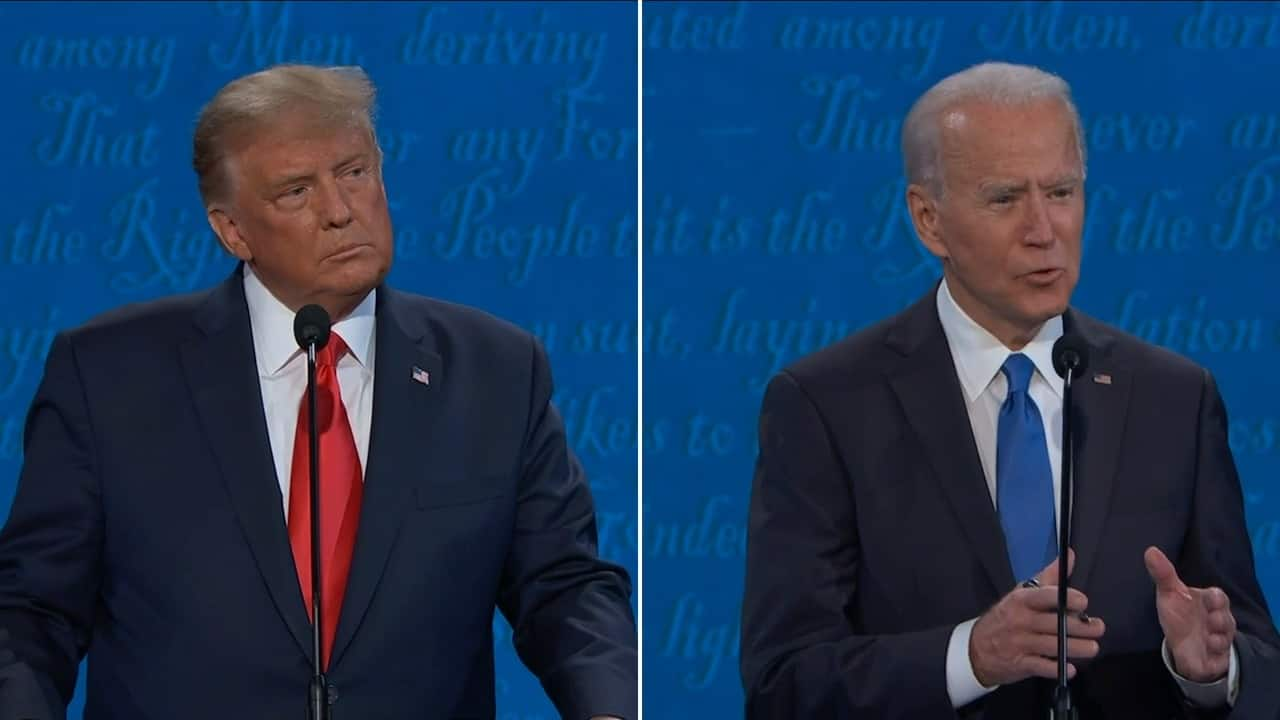Trump’s closing argument on coronavirus: ‘spikes’ for thee, but not for me

But what was most familiar at the outset was Trump’s happy talk on the biggest issue of the election: the coronavirus. A president who has repeatedly seen his projections of the death toll blown past continued his long-running quest to assure people that, despite his wayward past forecasts, we truly are nearing the end of this thing.
This time, though, it took a slightly different form, with Trump repeatedly building his case by citing real — and in some cases, imagined — “spikes” in coronavirus cases.
“There was a spike in Florida, and it’s now gone,” Trump said. “There was a very big spike in Texas; it’s now gone. There was a very big spike in Arizona; it’s now gone. And there were some spikes and surges and other places; they will soon be gone.”
Trump added: “It will go away, and as I say, we’re rounding the turn, we’re rounding the corner, it’s going away.”
The thing about the coronavirus is that you do see peaks and valleys, depending upon where you look. When things get particularly bad somewhere, more precautions are taken (like mask mandates and closing down portions of society) in hopes of bringing the numbers back down. When other areas seem to be doing well, people may feel like less precautions are necessary, creating conditions that can lead to resurgences. Weather differences appear to play a role too, with warmer states doing worse during the summer and colder states doing worse now. Superspreader events can also seed regional outbreaks, as appears to have happened with the annual biker rally in Sturgis, S.D.
What’s becoming abundantly clear, though, is that the peaks we see receding are being more than made up for in other parts of the country.
Arizona is at about one-fourth of its peak of daily coronavirus cases. Ditto Florida. Texas is at about half. But Trump’s claim that there are merely “some spikes and surges” that we’re now contending with? That’s woefully underplaying what we’re seeing.
In fact, nearly half of states are currently at their peak or have been in recent days. And some of the current peaks are actually higher than the ones we saw in Texas, Florida and Arizona, when you adjust for population.
The highest per capita daily case rate this summer in Texas was 35 per 100,000 people. In Florida and Arizona, it peaked over 50 per 100,000 people. Currently, four states are spiking above those levels — North Dakota (102), South Dakota (83), Montana (65) and Wisconsin (61). In other words, the four worst per capita spikes that we’ve seen are happening right now, with 3 of the 4 showing almost little to no sign of leveling off (the one exception being Montana, which is still increasing but not as sharply).
In addition, five other states are currently experiencing peaks higher than Texas was this summer: Idaho (51), Nebraska (44), Wyoming (43), Utah (43) and Iowa (35).
There is a key and pertinent difference between these states and the ones Trump mentioned: They are all less populous. Seeing peaks in bigger states is particularly ominous because a larger percentage of Americans are affected. Things being bad in the Dakotas is still bad, but we’re talking about a combined 1.6 million people, compared to Texas’s 29 million.
What’s we’re seeing nationally, though, hardly suggests we should be encouraged by peaks in various states being behind us. Even shortly after the debate Thursday night, we learned that we’re close to matching our peak case rate as a country. Newly reported cases are up 11.4 percent over last week. And it’s not just about increased testing. Newly reported deaths are up nearly 15 percent. Newly reported hospitalizations are up about 6 percent. And the positive test rate is also steadily increasing. While the number of tests has been largely static over the past month, the positive test rate has risen from 4.3 percent to 5.7 percent, according to Johns Hopkins University data.
But Trump didn’t stop with the “spike” talk there. While playing up the receding peaks in his chosen states, he sought to argue that other states (that just so happen to be swing states) are seeing spikes despite tougher mitigation measures instituted by Democratic governors.
“When you say ‘spike,’ take a look at what’s happening in Pennsylvania, where they’ve had it closed,” Trump said. “Take a look at what’s happening with your friend in Michigan. … It’s been like a prison. … Take a look at North Carolina, they’re having spikes and they’ve been closed, and they’re getting killed financially. We can’t let that happen, Joe. You can’t let that happen. We have to open up.”
Except that’s not actually true. Among the states that currently aren’t seeing spikes in cases: Pennsylvania and North Carolina, which have been more or less flat for months. Michigan is trending upward, but not like all the other states whose spikes Trump suggested were temporary annoyances (it’s currently at 19 daily cases per 100,000 residents).
Perhaps all of these peaks will soon fall off. Perhaps a vaccine will arrive as soon as Trump suggests and put a significant dent in things — even as deploying it widely will be challenging from both an availability and compliance standpoint. But what’s also clear is that happy talk and downplaying don’t seem to have done Trump too many favors throughout this process, nor has his selective view of which states are success stories. In fact, it has routinely risked reinforcing perceptions that Trump isn’t taking the virus as seriously as he could.
And in his final big national appeal on the issue Thursday night, Trump changed virtually nothing.






